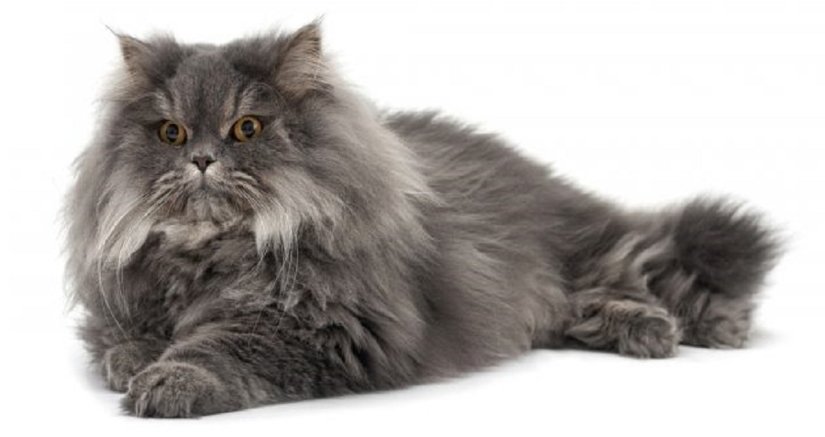



(Iran)
The Persian Longhair cat breed is one of the oldest cat breeds. This breed originated in Persia, Iran, as it is known today. During the seventeenth century, nobility enjoyed the Persian cat breed. Pietro Del Val imported the first Persian cat to Europe in 1626.
Brief History
The Persian Longhair is known for its round face and short muzzle. The “Iranian cat” as it is called in the Middle East, and the “Shirazi cat” in Iran, was first brought into Italy from Iran around 1620. This cat breed has been seen in hieroglyphics. Breeding of the longhaired Persian took place in Italy and France after this cat breed became popular throughout Europe. In 1870 the first Persian cat attended a cat show in London, U.K. The Persian then arrived in the U.S in the early 1900’s.
The earlier Persian breed had a much longer nose than today’s Persian cat breed, which has a flat-face. By 2015, the Persian was the second most popular cat breed in the U.S. Today’s Persian cats are related to the Western European cats. The Persian differs from the Angora cat breed in that the tail is longer, and the head is larger with ears that are less pointy.
Physical Description
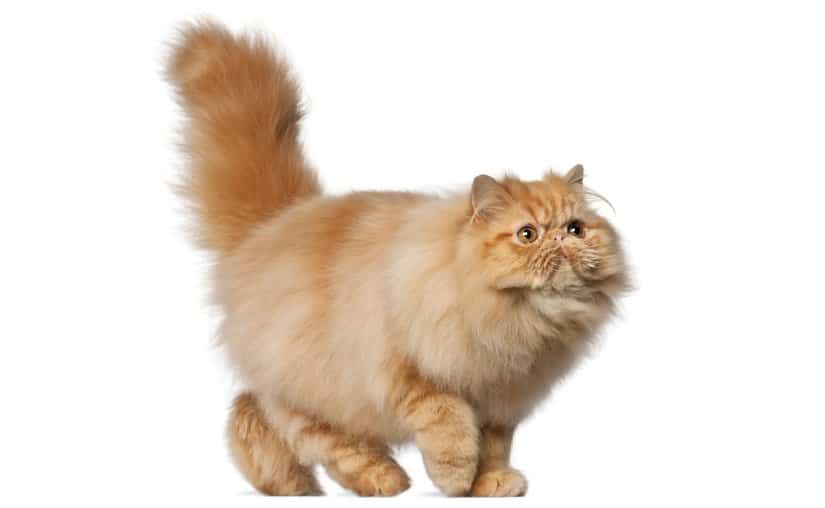
With a large round head, and large round eyes, the Persian has a short nose and full cheeks. The legs are short and thick, with paws that are strong and round. The tail is in proportion to the body, and is short in length. The tail is full. The neck is powerful and thick. The coat is long and thick. The fur is longer on the neck where there is a ruff. The front legs yield a frill of fur. The ears and toes have tufts of long hair. The body is muscular and strong. There are different types of Persians. This includes:
- Peke-faced Persians (more flat-faced)
- Doll-faced Persians (less flat-faced)
There are seven solid color divisions. These are the following:
- White
- Blue
- Black
- Cream
- Chocolate (rare)
- Lilac (rare)
- Red
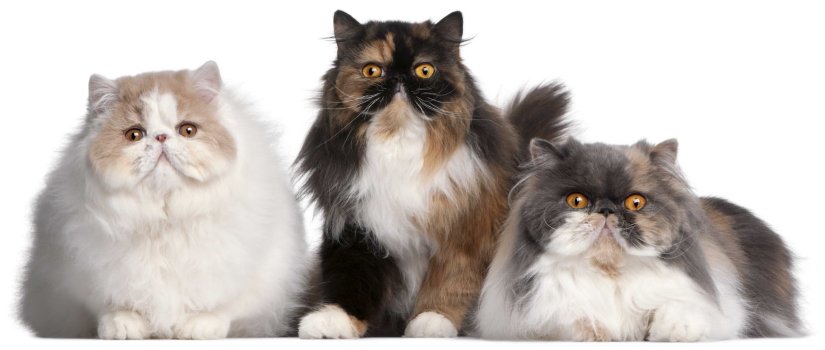
White Persian cats will have blue or copper eyes or one copper and one blue eye. Silver and Golden Division Persian cats yield chinchilla and shaded silver and golden colors. The chinchilla colored cat is white with black tipping scattered all over the face, legs, tail, and body. Shaded Persians will have black on their backs, with it being distributed evenly down the body. Leg and face tipping on the Persian should match, and yields a darker color than chinchilla. Golden Persians will have chinchilla coloring or shading. Green or blue-green eyes are matched with silvers and Guldens Paw pads are black and are matched with a red nose.
Smoke and Shaded Division Persians yield shell and cameo colors with a red tipping and white undercoat. Shell and shaded tortoishell Persian’s yield black tipping with patches of red tipped hair. Shell and shaded blue Persians will have a blue tipping with patches of cream hair.
Tabby Persian Cats come in classic, mackerel and patched. The Classic tabby will have bull’s eye markings on either side of the body. The mackerel will have narrow penciling throughout the body. There are also bicolor, particolor, and Himalayan Divisions of the Persian cat breed.
Temperament
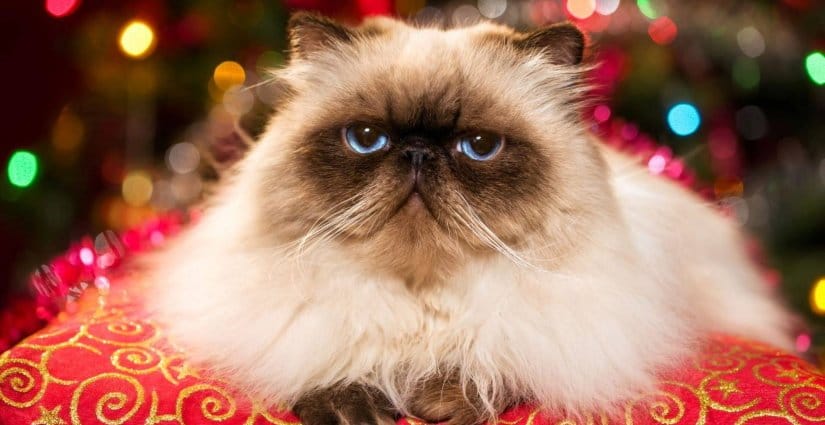
The Persian Cat breed is a sweet and kind cat breed that enjoys being pampered. Although super feisty if not exercised, or mentally stimulated, the Persian fancies lots of cuddles and cute cat toys. The Persian can be aloof when needing time alone, but is also affectionate with immediate family. Persian cats do well in a quiet home where nothing unusual happens. This wonderful cat breed tends to be placid in nature, and are friendly with strangers. Opt for numerous puzzle toys, as well as interactive cat toys to keep your Siamese busy. Animal Planet TV also works well to curb off loneliness when you’re out and about. Siamese cat parents often choose to have to Siamese cats to keep each other company since this cat breed has to have company.
Special Needs
The Persian does best as an indoor cat, but many have done well out in farms as well. This cat breed may be prone to certain illnesses, so it’s best to always keep a close eye on this fabulous cat breed. This cat breed is intelligent, and does well with apartment living or home living. The Persian needs to be indoors during the hot summer months, as it is heat sensitive. It is a wonderfully easy cat breed to live with, but does need mental stimulation. The Persian gets bored and incredibly depressed and anxious when alone for long periods of time.
Litter boxes for cats need to be kept clean, or your cat may not use it. All cats will need parasite control and routine health care throughout its life. This means vaccinating your cats. This is an important part of keeping your cats healthy throughout their lives. Consult with your veterinarian for advice as to the safest flea and tick products to use.
Your Persian will also need to be spayed or neutered. Your cat needs to be protected from household dangers like cleaning supplies, toxic plants, electrical cords, and aggressive animals. Cats are carnivores, and will need a high-quality diet with plenty of fresh water every day. Exercise can be achieved through a variety of play toys that encourage running and a game of chase. Sedentary cats may be prone to obesity, and health problems later on in life.
Possible Health Concerns
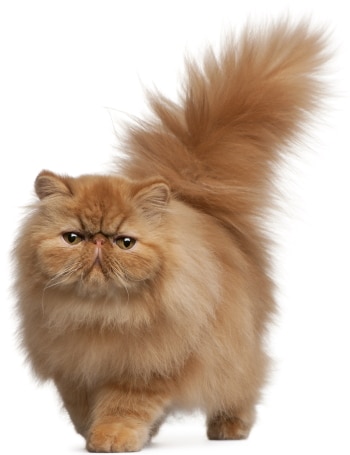
The Persian is a healthy and moderately active cat breed that may be susceptible to the following health conditions:
- Hypertrophic Cardiomyopathy (HCM): This is a heart muscle disorder where the heart walls of the left ventricle thicken. This results in the walls becoming stiffer. This is a common primary heart disease in cats. It tends to noticed at around 3 months to 17 years of age. Most cats will be middle aged when this disorder occurs. This disorder tends to affect males more than females, and it is an inherited genetic defect. Symptoms may include difficulty breathing, weakness or paralysis of the hind limbs. Fluid may also accumulate in the lungs, and in the space between the lungs and chest wall. Veterinary treatment will aim at improving cardiac function, and reducing blood clots. There is a good longterm outlook for mildly affected cats. Consult with your veterinarian for advice.
- Progressive Retinal Atrophy: This is a group of diseases that cause degeneration of the retina. This also includes inherited abnormalities of the light-sensitive retina layer. Cataracts are common toward the end of PRA. This results in it being difficult to detect underlying diseases of the retina. Consult with your veterinarian.
- Basil Cell Carcinoma: These are malignant tumors that occur most often in elderly cats. The Persian cat breed is very susceptible to this. They will first show up as ulcers on the head, legs, or neck, and are not raised from the skin. Instead they will spread and form new ulcers. Surgery is the best treatment for removal. These tumors will spread to other areas of the skin, but not to organs.
- Hip Dysplasia: This is rare in domestic cats, and is common in purebred cats. This occurs when the hip joint is loose, and leads to degenerative joint disease. (osteoarthritis) Symptoms include lameness that can be mild to severe. Cats generally need no surgery for hip dysplasia. Weight reduction can help reduce discomfort.
- Heat Sensitivity: Cats will sweat through their foot pads. The Persian needs to be kept indoors during the hot summer months. This cat breed needs lots of fresh water to drink, cool places to lie in, and a cool home during extreme summers. Flat –faced cats and Persians have breathing problems, and don’t pant as well as other cat breeds. Symptoms of heat exhaustion include a fast heart rate, sunken eyes, and excessive panting. If your Persian is a senior cat or is obese, it will be necessary to watch closely for heat exhaustion.
- Cherry Eye (Eyelid Protrusion): This is a disorder of the third eyelid, resulting in swollen redness of the eye. It is more common in Persian cats. Consult with your veterinarian for advice.
- Entropion: This is the inversion of the lower lid. It is more common among purebred cat breeds like the Persian cat.
- Polycystic Kidney Disease. This occurs when the polycystic kidney has numerous cysts within the functioning part of the kidney resulting in enlarged kidneys. Consult with your veterinarian if your Persian vomits frequently, has a decreased appetite, and increased thirst or urination.
- Ringworm: This is an infection of the skin, hair, or claws, and is caused by a fungus called dermatophyte. This occurs in 98% of cats. It spreads easily from cats to people. Symptoms include circular, bald patches that scale and have broken hairs in a ring-like fashion. Consult with your veterinarian for advice.
- Skin Disorders: The Persian may be prone to skin disorders. Persian cats are prone to idiopathic seborrhea. This is an inherited skin disorder resulting in the overproduction of an oily substance. This clumps in the cat’s fur, and causes it to smell bad. Symptoms include red and irritated skin with excessive scratching. Consult your veterinarian for advice.
Exercise
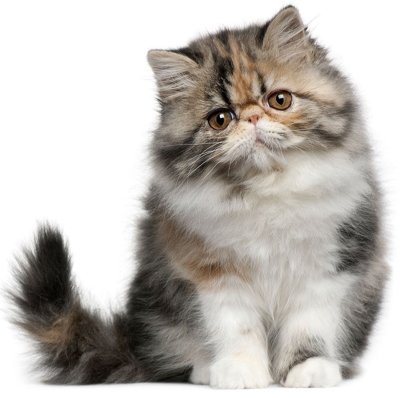
The Persian cat breed needs daily exercise combined with plenty of mental stimulation through active play and interaction with people. Cat parents can use cat toys like the Mousr or Cat Dancer to get their cats to play. This will encourage your cat to play. Finding a variety of mentally stimulating cat toys will allow for your Persian to lead a well-balanced life, with the right amount of exercise and mental stimulation. Cat harnesses also allow for daily walks.
The Persian is a sedate cat breed, that thrives on attention. That said, this cat breed still needs to play and interact with people. Cat gyms, cat scratchers, and interactive cat toys within a cat friendly home environment work best for this fabulous cat breed.
Look out for the latest cat toys like Ripple rug play mats, the Feather Whirls, pet cube toys, food trees, turbo scratcher toys, cat companion interactive toys, and electronic motion toys. All these and many more will keep your Persian kitty entertained when you’re out and about.
Nutrition
The Persian cat breed will need proper nutrition. That said, a high-quality diet that is appropriate for the specific life stage of the cat is necessary. Protein as an ingredient, needs to come first. Dry cat food is a popular choice because it promotes healthier gums and teeth. Yet, wet food is highly recommended by veterinarians because it provides more moisture to cats. Cats don’t drink a lot of water and tend to sometimes get dehydrated. Wet cat food also has its benefits. By choosing a well-known name- brand cat food that has scientific backing, as well as quality control, cat parents can be assured that they are providing a well-balanced diet.
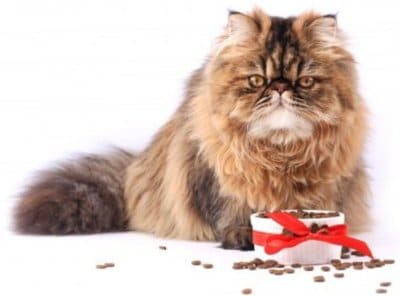
All cat breeds need high- quality fat and protein in their diets. They also need amino acids, including taurine that cannot be found in either human food or dog food. There are also numerous specialty diets for your cat that are formulated specifically for certain medical problems like urinary tract disorder, obesity, or kidney disease.
All cats do well by being fed twice daily. During kittenhood, kittens will need to be fed every few hours. Growing kittens need more calories, nutrients, vitamins, protein, and calories. Your Persian cat should be able to enjoy a peaceful meal in a quiet corner of the house. Some cat parents prefer to leave cat kibble out 24/7. When looking for a high-quality cat food, here’s what to look out for:
- No low-quality fillers
- No artificial additives
- Low grade ingredients or toxic ingredients
- All cat food has to be meat-based because all cats are carnivores
- No garlic
- Plant-based ingredients should be listed after the protein-based ingredients
Consult with your veterinarian for the best dietary advice for your Persian cat.
Grooming
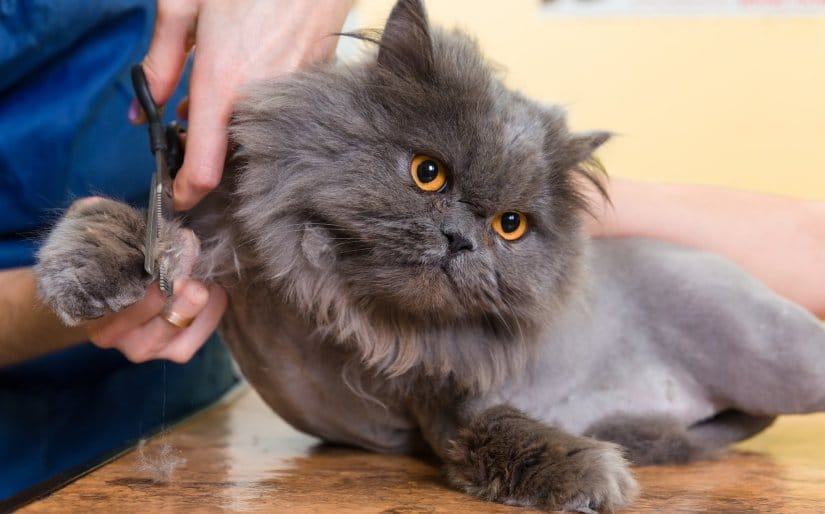
The Persian cat needs daily grooming to remove shedding hair, and to prevent hair from matting. Because this breed has a long and wonderfully soft coat, extra grooming care is required. Stainless steel combs help to remove dead hair. Care must be taken when grooming leg hair and body hair to avoid missing spots that could tangle or mat easily. Curry brushes help with grooming, and will remove dead hair and debris from your Persian’s coat.
Look for high-quality pet products to decrease shedding, and help prevent hairballs. Products like the Furminator will easily groom through your Persian’s topcoat, and safely remove dead hair without hurting your cat. Soft tip massagers, deluxe nail trimmers, and de-shedding tools all help make cat grooming so much easier.
All cat breeds will groom themselves several times throughout the day. Daily grooming is necessary because it limits the amount of hair that your cat will consume. This helps limit the development of hairballs. Your Persian cat will enjoy being groomed. Coat hair always looks best during the cold winter months. Cats that have been spayed or neutered will have great coats year- round. This is because hormonal changes in cats affects coat length and thickness.
Cat parents can remove mats by using cat clippers which are safer than using scissors. Daily cleaning with pet wipes beneath the tail is necessary. Ears should be checked weekly for cleanliness and sensitivity. If there is a build-up of wax and dirt, organisms can lead to an ear infection. Consult with your veterinarian about safe and gentle ear cleaning techniques. Nail trimming is necessary every few weeks. Eyes should also be cleaned gently every morning with cotton wool or a soft wipe. Each eye should be cleaned with different wipes or cotton balls to avoid eye infection contamination in both eyes.
Healthy Persians need minimal bathing with a gentle cat shampoo. Your cat will need dental care as well. By feeding dry food, and having professional dental cleanings with your veterinarian throughout your cat’s lifetime, your cat will have less of a chance of developing gingivitis or gum disease.
Adopting a Persian
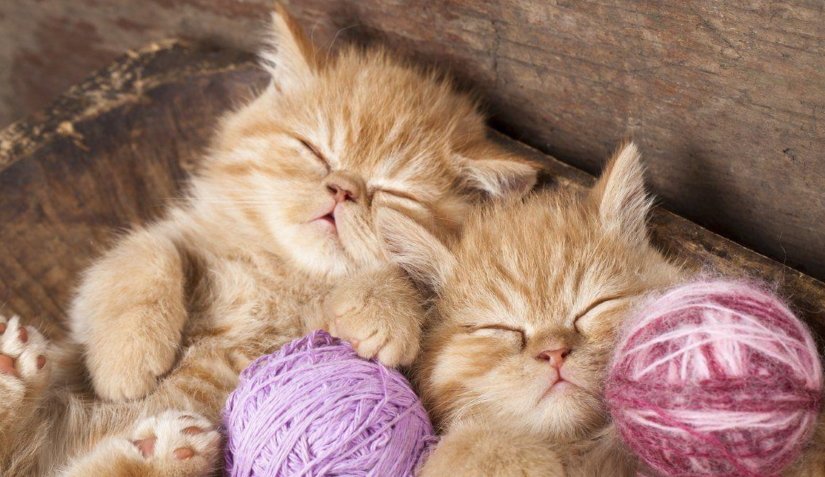
Persian cats have a compliant nature, and are easy to live with. These beautiful cats are docile, and adapt easily to new environments. Without a doubt, it is the Persian cat’s beauty and perfect temperament that earns them a favorite spot in every cat lover’s heart as best feline companions.
Persian’s deserve the very best home with feline pet parents geared towards their cat’s needs. This breed, although sturdy and well-built, is delicate health wise, and may be prone to numerous health conditions. It is up to cat parents to have the ability to sense when their Persian is not feeling well. Regular veterinary care is a must for this terrific cat breed. This will help to nip any health issues early on. As with all cats, it’s necessary to consider pet insurance for your Persian cat. Too many cat parents wait until a serious medical issue affects their pets, only to find out that they cannot afford the veterinary care. Make certain that you are able to afford good feline care before adopting your Persian.
Before bringing your Persian home, locate both an emergency and regular veterinarian. Prepare your home by removing all dangerous and toxic items. Your Persian needs to be in a safe place when home. Your Persian cat will also need to be protected from household hazards, most especially electrical cables, poisonous plants, medication, and open windows. As usual, make sure that children are always gentle and quiet around your Exotic.
Give your Persian cat plenty of time to adjust to his new surroundings. As with any cat adoption, make sure that you have the time and resources to take good care of your Persian cat!
Frequently Asked Questions
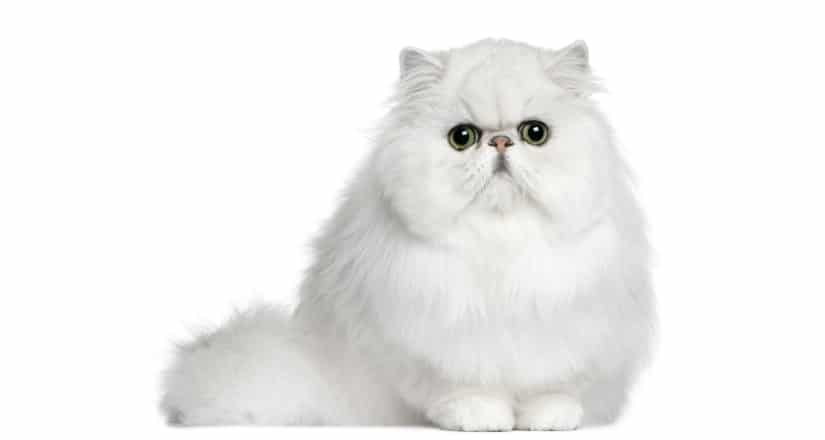
What is the difference between a Persian and a Himalayan cat?
None, both are the same breed. Himalayans have different color points. The Himalayan cat breed has longer fur and is the most popular cat breed among Persian cats. The Himalayan was bred in the US during the 1930s. Breeders did this by specializing in Persian cats to produce a Persian cat with colored points.
The Himalayan was recognized in the US in the 1950s as its own breed. In the UK, the Himalayan is referred to as the Colorpoint Longhair. There is also a difference in length between both in that the Persian has an average length of 14-18 inches, and the Himalayan is 17-19 inches in length. They are both docile, affectionate, and loving.
Are males or females more affectionate?
All kittens and adult cats will have unique personalities, but generally, Persian cats are sweet, intelligent, and affectionate and make great companions at home.
What are the key features of a Persian cat?
Persian cats tend to weigh from 7 to 12 pounds. They have a general life expectancy of 10 to 17 years. This cat breed is medium-sized and is long-haired with a tail that is fluffy.
The Persian cat features a range of coat colors that include gold, silver, smoke, shaded, particolor, tabby, and even are bi-colored. They have a flat face with large, intelligent, and round eyes. The eye color is related to their coat color and range from deep blue, copper, green or blue-green.
Do Persian cats need exercise?
Persian cats are generally indoor cats and require less exercise. That said, all cat breeds need mental stimulation and playtime. Keeping your Persian cat indoors eliminates potential threats from other wild cats or dogs and protects them from over-heating.
Are Persian cats heat-sensitive?
Yes, all Persian cats are sensitive to heat, and you should keep your Persian cat indoors during the hot summers. This dignified breed enjoys hanging out indoors in a calm and relaxed environment.
